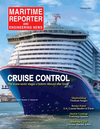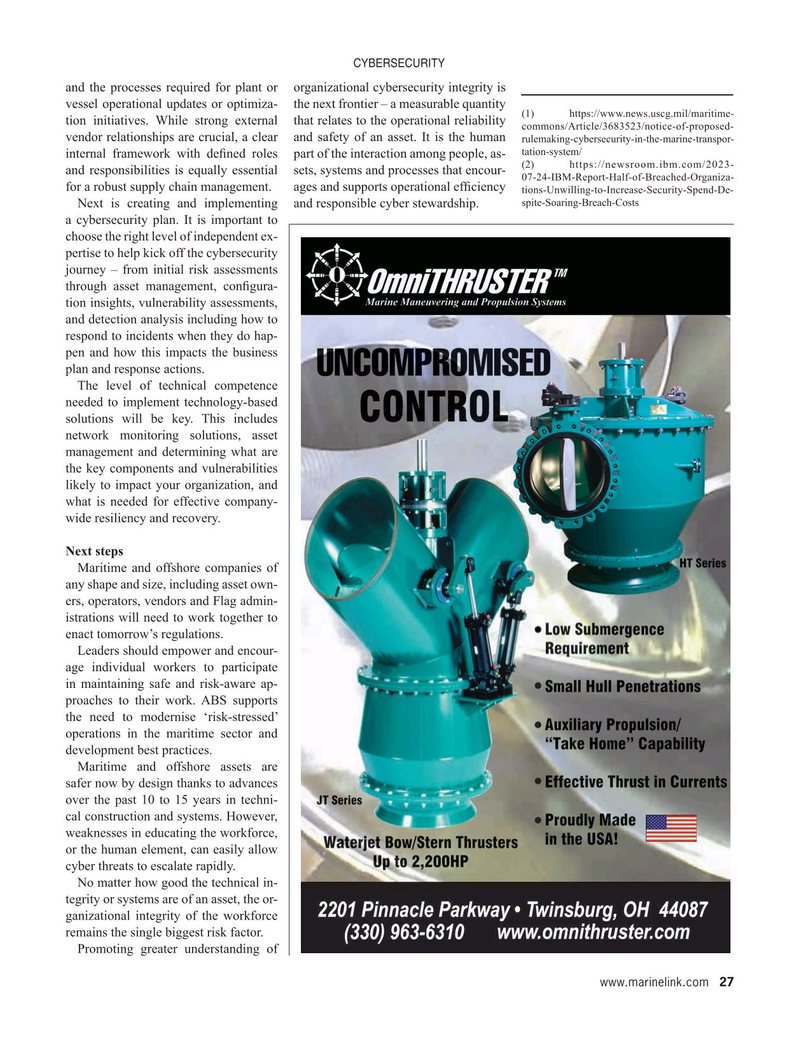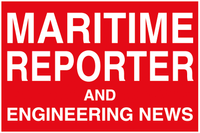
Page 27: of Maritime Reporter Magazine (February 2025)
Read this page in Pdf, Flash or Html5 edition of February 2025 Maritime Reporter Magazine
CYBERSECURITY and the processes required for plant or organizational cybersecurity integrity is vessel operational updates or optimiza- the next frontier – a measurable quantity (1) https://www.news.uscg.mil/maritime- tion initiatives. While strong external that relates to the operational reliability commons/Article/3683523/notice-of-proposed- vendor relationships are crucial, a clear and safety of an asset. It is the human rulemaking-cybersecurity-in-the-marine-transpor- tation-system/ internal framework with de? ned roles part of the interaction among people, as- (2) https://newsroom.ibm.com/2023- and responsibilities is equally essential sets, systems and processes that encour- 07-24-IBM-Report-Half-of-Breached-Organiza- for a robust supply chain management. ages and supports operational ef? ciency tions-Unwilling-to-Increase-Security-Spend-De- spite-Soaring-Breach-Costs
Next is creating and implementing and responsible cyber stewardship. a cybersecurity plan. It is important to choose the right level of independent ex- pertise to help kick off the cybersecurity journey – from initial risk assessments through asset management, con? gura- tion insights, vulnerability assessments, and detection analysis including how to respond to incidents when they do hap- pen and how this impacts the business plan and response actions.
The level of technical competence needed to implement technology-based solutions will be key. This includes network monitoring solutions, asset management and determining what are the key components and vulnerabilities likely to impact your organization, and what is needed for effective company- wide resiliency and recovery.
Next steps
Maritime and offshore companies of any shape and size, including asset own- ers, operators, vendors and Flag admin- istrations will need to work together to enact tomorrow’s regulations.
Leaders should empower and encour- age individual workers to participate in maintaining safe and risk-aware ap- proaches to their work. ABS supports the need to modernise ‘risk-stressed’ operations in the maritime sector and development best practices.
Maritime and offshore assets are safer now by design thanks to advances over the past 10 to 15 years in techni- cal construction and systems. However, weaknesses in educating the workforce, or the human element, can easily allow cyber threats to escalate rapidly.
No matter how good the technical in- tegrity or systems are of an asset, the or- ganizational integrity of the workforce remains the single biggest risk factor.
Promoting greater understanding of www.marinelink.com 27
MR #2 (18-33).indd 27 1/28/2025 3:27:18 PM

 26
26

 28
28
